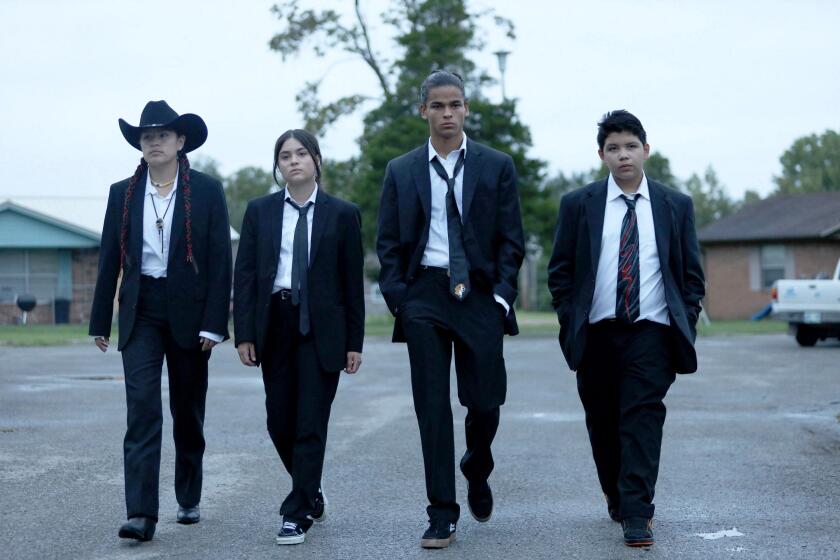Review: A legendary Native athlete is restored to glory by the Olympics and a rich new biography
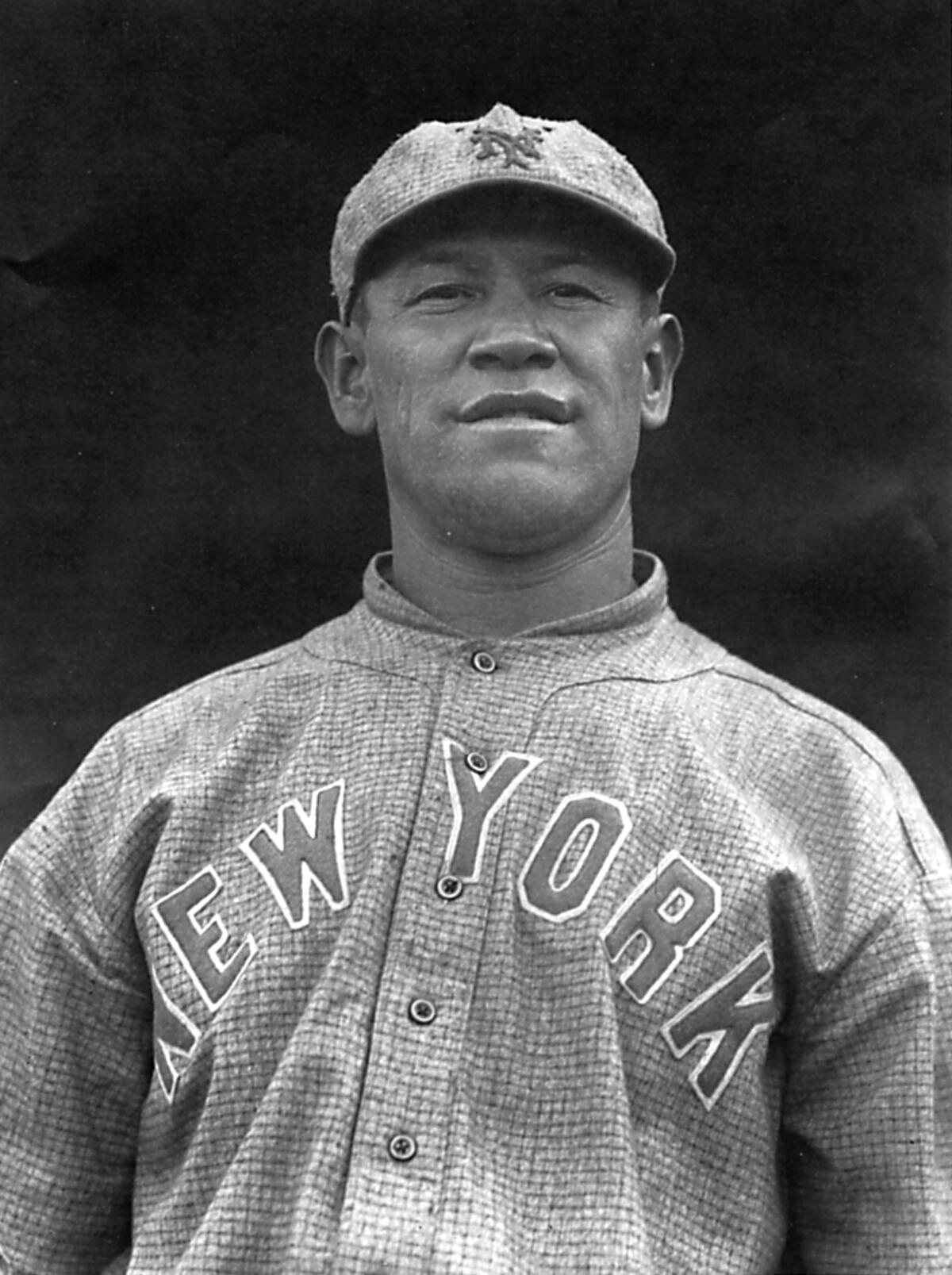
- Share via
On the Shelf
Path Lit by Lightning: The Life of Jim Thorpe
By David Maraniss
Simon & Schuster: 672 pages, $33
If you buy books linked on our site, The Times may earn a commission from Bookshop.org, whose fees support independent bookstores.
Jim Thorpe was both a man and a myth, one that endures a century after his story unfolded. The Native American athlete’s life had the arc of tragedy — a chaotic upbringing; glory in collegiate football; two gold medals in the 1912 Olympics, later stripped away — a struggle made exponentially more daunting by the treatment of Native people of his era. He has been written about in dozens of books, memorialized in a movie and revisited in countless articles, essays and speeches.
David Maraniss’ new biography, “Path Lit by Lightning,” goes beyond the myth and into the guts of Thorpe’s life, using extensive research, historical nuance and bittersweet honesty to tell the story of a gifted and complicated man. Maraniss is a two-time winner of the Pulitzer Prize and author of a dozen books of American political and sports history. An associate editor at the Washington Post, he taps a lifetime’s immersion in sports and politics to tell Thorpe’s story.
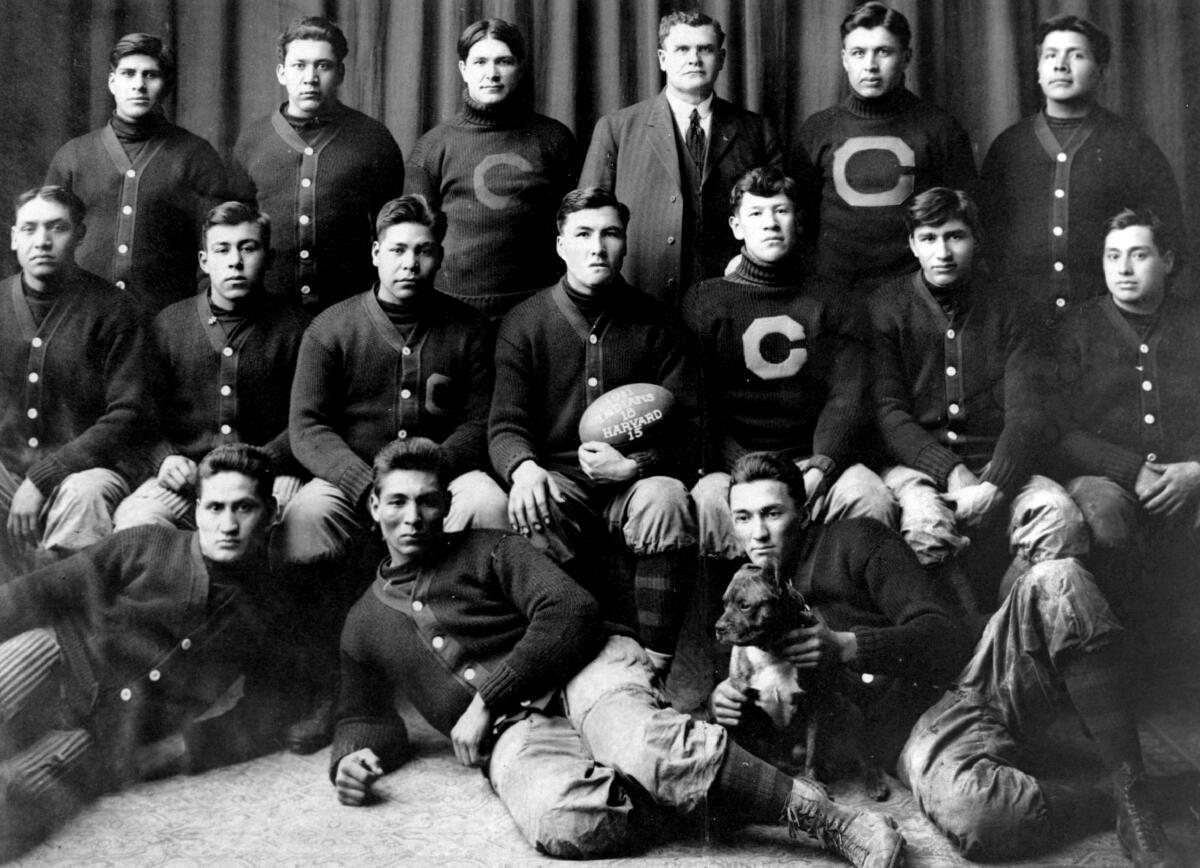
A member of the Sac and Fox Nation of Oklahoma, Thorpe was one of thousands of Native children shaped and warped by the government’s “Kill the Indian, save the man” philosophy, a concerted attempt to expunge every trace of Native heritage by turning the child into a simulacrum of a white man. The locus of that effort was in Indigenous boarding schools around the country. That’s where Thorpe wound up, separated from his family and sent halfway across the country to the Carlisle Indian Industrial School in Pennsylvania.
At Carlisle, Thorpe joined children from tribes around the country. Some of those children had enormous athletic potential, and for Thorpe and other Native athletes, Carlisle became a gateway into a thrilling life of struggle and accomplishment on the field. His talent was spotted by Glenn Scobey “Pop” Warner, Carlisle’s athletic director, who could see that even among many gifted players, Thorpe was in another category altogether.
The new comedy, set on an Oklahoma reservation, uses its rich, highly specific sense of place to offer a refreshing take on contemporary teen life.
“His teammates could sense he was different,” Maraniss writes. “They had seen his easygoing nature, his lack of nerves, the resilience of his body and his resistance to pain, the rare combination of strength, speed, stubbornness, instinct, and agile grace, the hint of danger and spark of electricity.” Thorpe and the Carlisle football team became a sports phenomenon. They played teams from elite colleges up and down the East Coast, compiling an overwhelming record of wins. (The sweetest: beating the Army team at West Point, symbolic revenge for the havoc the U.S. military had wreaked on their people.)
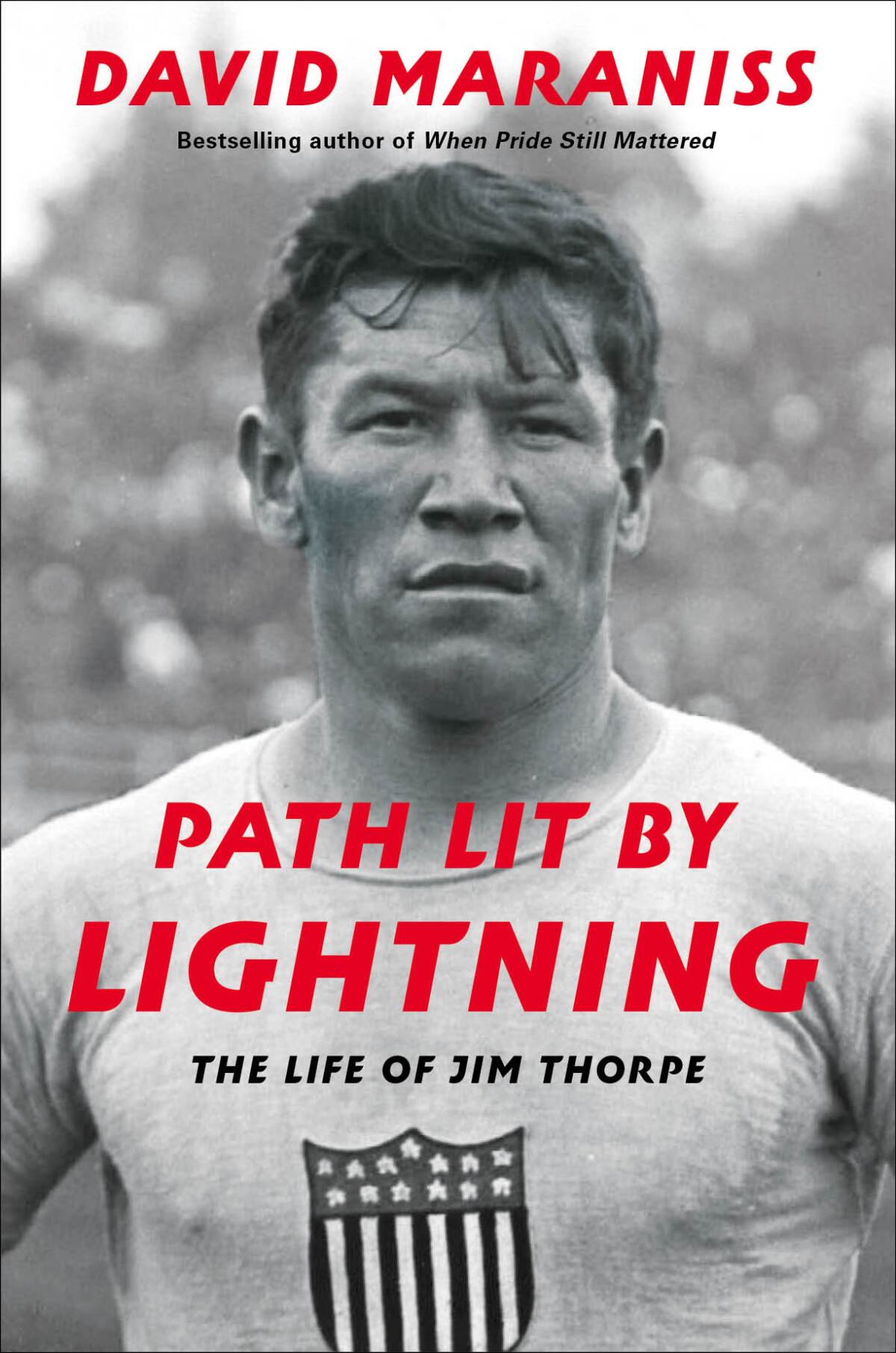
For Indigenous players, the Carlisle team was the apotheosis of camaraderie and honor: Remembering the end of a winning season, Thorpe wrote, “I felt as though I wanted to fling my arms about the field, the goal posts, and hold them tight, so that with their memories and traditions they might never escape me.”
Carlisle football was a warmup for a performance that would make him one of the world’s best known athletes. The young Thorpe, master of any sport he took on, joined the 1912 Olympic team and performed at the Games in Sweden that year. Maraniss’ account of the giddy atmosphere of the Swedish Olympics, where European royalty bestowed wreaths of flowers and silver trophies on winners who caroused all night in celebration, is a time trip back to a simpler era. Thorpe won gold in both the pentathlon and the decathlon. The king of Sweden proclaimed him the greatest athlete in the world.
And then: disaster. Before the Olympics, during the Carlisle summer term, Thorpe had played semi-pro baseball and received a modest payment in return. After his Olympic wins, the press dug up Thorpe’s record of being paid to play, violations of Olympic rules governing an athlete’s amateur status. Pop Warner and the president of Carlisle went into a defensive crouch, denying knowledge of Thorpe’s baseball activities (Maraniss shows that they certainly did know). Thorpe took the fall and his medals were taken from him, though his shoddy treatment generated a vast amount of sympathy worldwide.

He emerged from the ordeal “toughened but not ashamed,” Maraniss writes, and the injustice of his punishment only heightened his celebrity. He married a fellow Carlisle student, Iva Miller, and was recruited by the New York Giants to play baseball. Thorpe and his bride spent their honeymoon on a world baseball exhibition tour, the Giants battling the Chicago White Sox before adoring audiences in Australia, China and Japan, finishing with a run through Egypt, Italy and France. Thorpe’s calendar year became a cycle of baseball in spring and summer, football in fall and winter’s home in Oklahoma, where he loved to fish and hunt. He played pro football in the Ohio League, the precursor to the National Football League, and today Thorpe is considered one of the founders of the NFL.
Bestselling author Tommy Orange talks about his ‘There There’ sequel and having to adjust to being the center of attention.
But the schedule was punishing, and Thorpe had a shadow side: an urge to drink and brawl, a carelessness with money and a neglect of his family. And the reckoning all pro athletes face: The degradation of athletic prowess by age, a battle that all players eventually lose. The relentless debasement Thorpe and other Native athletes had to endure just to make a living makes for cringe-inducing reading. An all-Nativeteam Thorpe joined couldn’t just play ball; it had to stage carnival sideshows dressed in Indigenous regalia, beating a drum and dancing.
The rest of Thorpe’s life was a constant hustle for money and jobs. One of Maraniss’ challenges is to keep up narrative momentum through this period. For the most part he succeeds, though Thorpe’s pattern — to start strong, then flame out, then walk away — feels unbearably sad, the waste of so much potential and experience. But Maraniss refuses to paint him as either a failure or a martyr: “Thorpe‘s life might best be understood not as tragic dissolution but as gritty perseverance.”
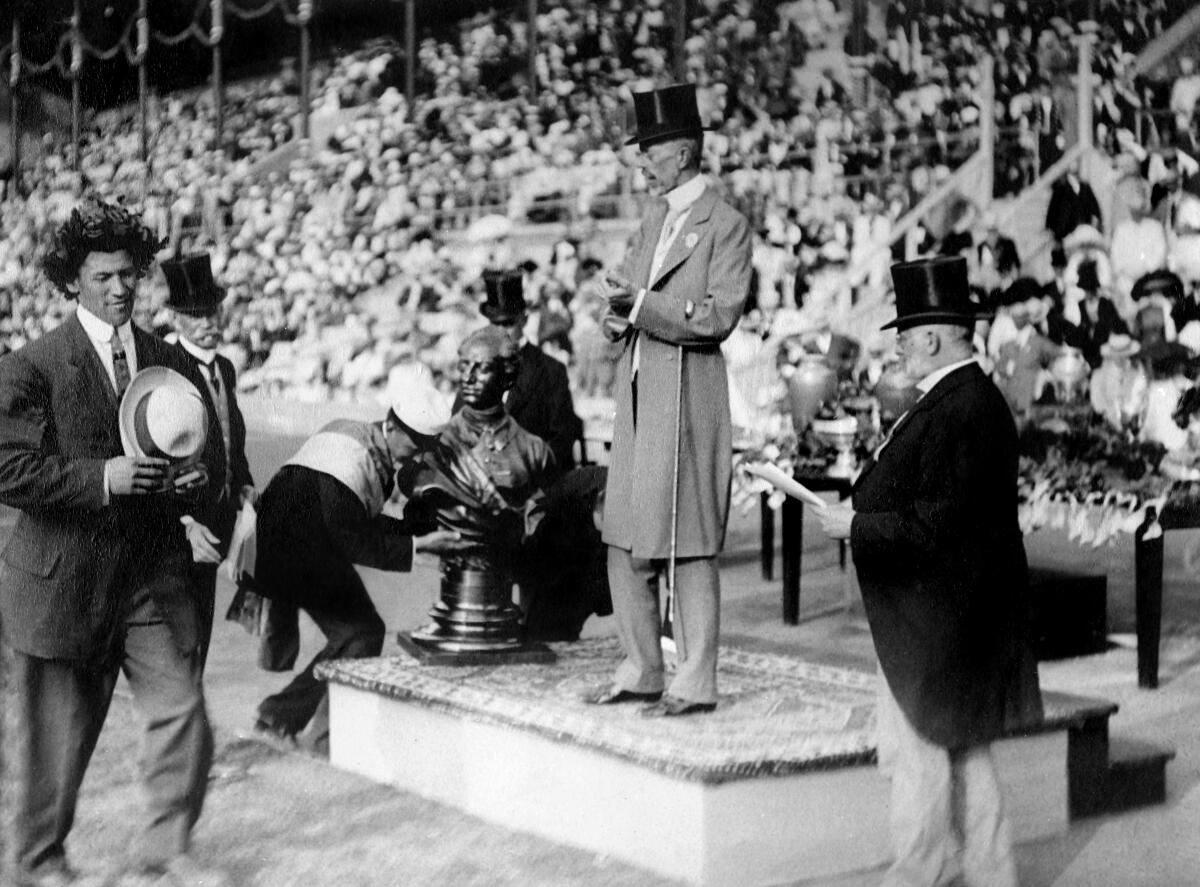
Thorpe earned his living, even if it was with a shovel. He worked as an actor in Hollywood in numerous bit parts. He advocated for Native Americans in the movie industry, lobbying studios to use actual Indigenous people to portray their onscreen counterparts. He crossed and recrossed the country, telling his inspirational story and collecting modest fees in return. And finally, in 1951, a movie was made of his life. Though Thorpe was played by a white man (Burt Lancaster) and though the movie was narrated in the voice of a whitewashed Pop Warner, it was largely sympathetic. Thorpe died not long after, in 1953. His descendants have been working to restore his legacy ever since. This summer they attained the ultimate validation: 110 years after Thorpe’s wins, the International Olympic Committee restored him as the sole winner of the pentathlon and decathlon in 1912.
“Path Lit by Lightning” ends with words from Grace Thorpe, Jim’s daughter, neglected by her father as a child but determined to preserve his memory: “My father had his faults. Who doesn’t? He was not a businessman and he left only a small estate when he died. He dug ditches to support his family during the Depression when he was too old for athletics. But in his chosen field he had no peers. He stood alone. He was remarkable in magnitude, degree, and effectiveness. He was great.”
Maraniss’ biography does justice to the struggles and triumphs of a truly great man.
Gwinn, a Pulitzer Prize-winning journalist who lives in Seattle, writes about books and authors.
More to Read
Sign up for our Book Club newsletter
Get the latest news, events and more from the Los Angeles Times Book Club, and help us get L.A. reading and talking.
You may occasionally receive promotional content from the Los Angeles Times.
